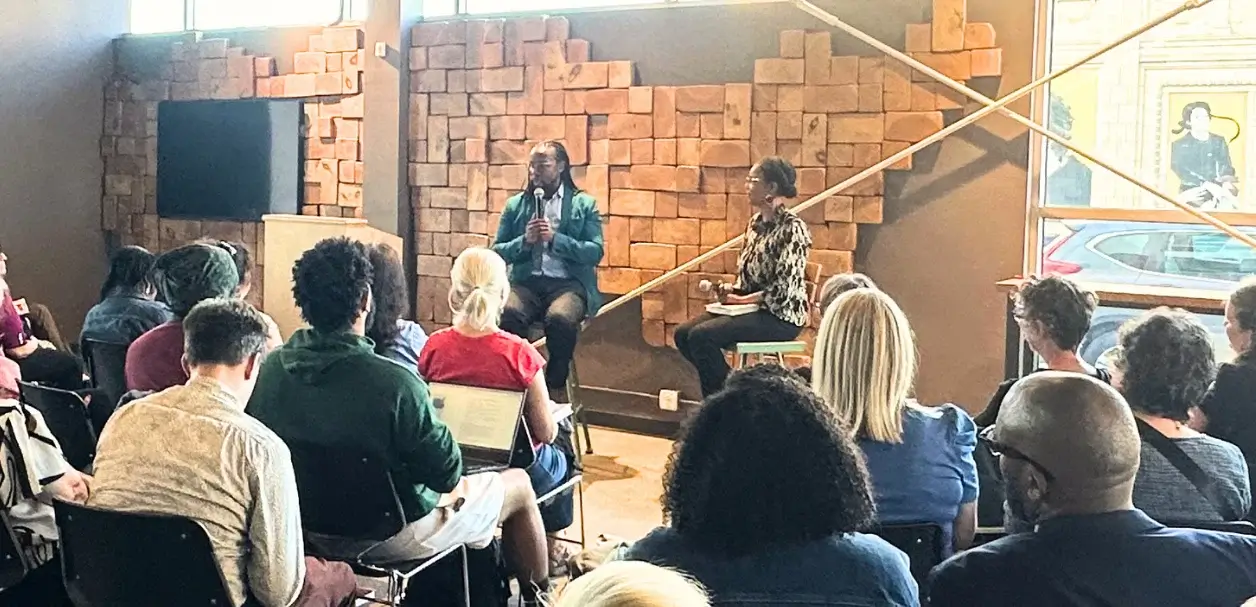In May, I had the incredible privilege of interviewing Ibram X. Kendi during the Milwaukee stop of his Malcolm Lives tour. The event, hosted by America’s Black Holocaust Museum, Niche Book Bar, and Boswell Books, was electric—equal parts literary conversation, history lesson, and community gathering.
But what moved me most? The kids.
The crowd was mostly adults, so the wide-eyed young readers stuck out, and I made sure to call on them during the open Q&A. They raised their hands. They asked questions. They waited patiently (and giddily) in line to get their books signed. And they walked out with more than an autograph—they left with a spark.
Bringing kids to author events isn’t just cute or educational. It’s transformational.
1. Meeting the Author Makes the Book Come Alive
When young people meet an author, the words on the page suddenly feel personal. They’re no longer reading a story by a name—they’re engaging with a real person who chose every scene, fact, and phrase with care.
As Kendi explained during our talk, “Stories are the greatest teachers.” And when kids hear directly from the storyteller, their learning deepens. They get behind-the-scenes access to the writing process, the research, the emotional labor—and the joy. One young attendee asked what inspired Kendi to write this book. His answer was that he wanted young people facing tough circumstances to see themselves in Malcolm and think, “Despite all of that, I can still transform the world.”
2. They See Reading and Writing as Real, Powerful Work
We often talk about reading as a gateway to academic success. But seeing an author in action reframes it: reading is a gateway to connection, conversation, and change.
Kendi described how he became a “real reader” at age 23. At the time, he was in graduate school, surrounded by peers who were referencing books and authors he hadn’t yet read. That experience stirred a sense of urgency—and humility. He felt like an outsider, unsure if he belonged. So he dove in, reading nearly 100 books in a single year. “Creating spaces where reading is valued where you feel like you have to read to belong—that’s what did it for me, ” he said. “And that’s what did it for Malcolm.”
When kids attend an author talk, they don’t just hear about the book. They experience reading and writing as tools for exploration, empowerment, and expression.
3. It Plants Seeds for Lifelong Curiosity
Books carry stories. Events create memories. Together, they build identity.
One powerful element of the Malcolm Lives event was the setting: America’s Black Holocaust Museum. As Kendi shared Malcolm’s story—one of displacement, resistance, transformation—the museum’s exhibits stood as a living testament to the broader black experience in America. It was history and present-day reckoning, all in one place.
In our conversation, we talked about how Kendi layered the book with “split screens” of past and present, inviting readers to see how history still shapes their neighborhoods, families, and prospects today. That kind of framing helps young people see reading not just as decoding words but as decoding the world.
4. It’s a Memory You’ll Both Treasure
Author events amplify your everyday family literacy rituals. They’re not just about the Q&A or the autograph; they’re about walking out with your child and hearing them say, “I want to read more about that.” Or “I didn’t know Malcolm lived in Milwaukee.” Or even, “I want to write something, too.”
Want to raise a real reader? Bring them to author talks. Let them ask questions. Let them be moved. Let them see that behind every book is a person—and that people like them write books, too.And if you missed Dr. Kendi’s Milwaukee stop, Malcolm Lives is available now. Grab a copy and read it together. The story’s powerful. The conversations it sparks? Even more so.

